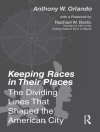This book demonstrates how data from participatory visual methods can take people and communities beyond ideological engagement, initiating new conversations and changing perspectives, policy debates, and policy development. These methods include, for example, photo-voice, participatory video, drawing/mapping, and digital storytelling.
Organised around a series of tools that have been used across health, education, environmental, and sociological research, Participatory Visual Methodologies illustrates how to maintain participant engagement in decision-making, navigate critical issues around ethics, track policies, and maximize the potential of longitudinal studies. Tools discussed include:
- Pedagogical screenings
- Digital dialogue devices
- Upcycling and ‘speaking back’ interventions
- Participant-led policy briefs
An authoritative and accessible guide to how participatory visual methods and arts-based methods can influence social change, this book will help any postgraduate researcher looking to contribute to policy dialogue.
Содержание
Chapter 1: Introduction: A Framework for Social Change through Participatory Visual Research
Introduction
Policy, Policy, Policy
Community and Policy Dialogue
Critical Audience Engagement
Overview of the Book
Key Points of the Chapter
Chapter 2: Project Design: Beginning with the End in Mind
Introduction
Research Design for Social Change
Participatory Visual Methods
A Case Study: Addressing Campus-based Sexual Violence
Conclusion
Key Points of the Chapter
Chapter 3: Speaking Back as Method
Introduction
Defining Speaking Back
On Using Speaking Back as Method
Features of Speaking Back as Method
Conclusion
Key Points of the Chapter
Chapter 4: Pictures at an Exhibition
Introduction
Community-Based Exhibitions
Processes in Curating
Studying Exhibiting
One Set of Photos, Multiple Showings
Method: Studying Audience Engagement
Studying Audiences through Exhibiting
Exhibition Catalogues
Creating an Exhibition Catalogue
Drawings: Collections and Catalogues
Conclusion
Key Points of the Chapter
Chapter 5: The Pedagogy of Screenings
Introduction
Why a Pedagogy of Screenings?
Methodologies for Screening
Researchers Screening their Own Productions
Researchers Screening Videos Made by Participants
Participants Screening their Own Work
Online Platforms and Screening
Discussion
Conclusion
Key Points of the Chapter
Chapter 6: Digital Artefacts: Researcher-Led Tools for Dialogue
Introduction
Research-Produced Digital Artefacts: A Brief History
Research-Produced Digital Dialogue Tools: Three Cases
A Co-Production: Researchers and Teachers Working Together on a ‘Re-mix’ Video
Digital Artefacts: Issues to Consider
Researcher Reflexivity/Discussion
Conclusion
Key Points of the Chapter
Chapter 7: Engaging Policy Makers
Introduction
Participant-led Tools for Engaging Policy makers
Taking Research to Policymakers
Using Participatory Video to Engage Policy Makers
Studying Pathways to Impact
Conclusion
Key Points of the Chapter
Chapter 8: What Difference Does This Make?
Introduction
Theories of Change
Tracking Change
Interpretive and Ethnographic Approaches
Conclusion
Key Points of the Chapter
Об авторе
Relebohile Moletsane is Professor and the John Langalibalele Dube Chair in Rural Education in the School of Education, University of Kwa Zulu-Natal in Durban, South Africa. Her areas of research include curriculum studies, rural education, gender and education, sexual and reproductive health education, girlhood studies and girls education in Southern African contexts. She is the Co-PI (with Claudia Mitchell, Mc Gill University) on the Networks for Change and Wellbeing project (Networks for Change and Well-being (www.networks4change.co.za/). The project uses participatory visual methodologies, including photo-voice, participatory video (cellphilm), digital storytelling and drawing to address sexual violence with girls in rural Kwa Zulu-Natal.












